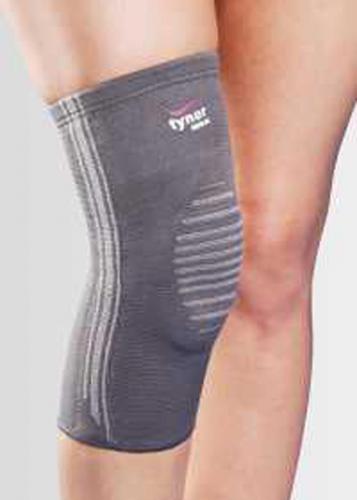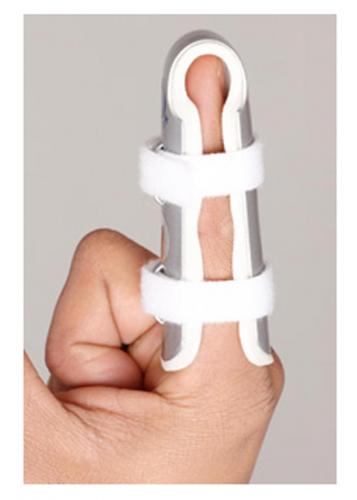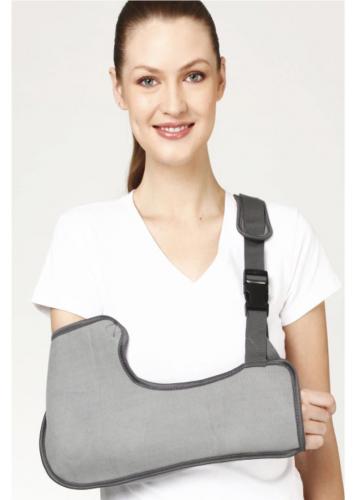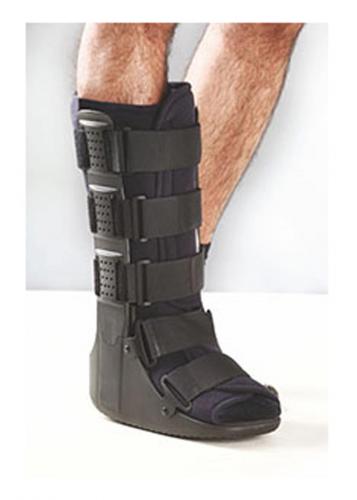Functional Braces Best for: Sports injuries, after surgery

Functional braces are used after a knee injury and provides support while the knee injury is healing. The type of functional brace need is determined by the type of injury, and there are functional knee braces to treat MCL, ACL, PCL, LCL, and combination injuries. In each case, there are specific functional knee braces that apply the appropriate forces to support the affected ligament.
 A functional knee brace comes in several types, and doctor will prescribe the one that matches the severity of the injury. For mild to moderate collateral ligament injuries, the most common style is made of stretchy neoprene material and has metal hinges on either side of the knee. For more severe injuries, a knee brace that uses a rigid frame with hinges may be necessary. In many cases, an off-the-shelf brace can be used as long as the proper measurements are taken.
A functional knee brace comes in several types, and doctor will prescribe the one that matches the severity of the injury. For mild to moderate collateral ligament injuries, the most common style is made of stretchy neoprene material and has metal hinges on either side of the knee. For more severe injuries, a knee brace that uses a rigid frame with hinges may be necessary. In many cases, an off-the-shelf brace can be used as long as the proper measurements are taken.Functional knee braces are designed to reduce knee instability after an injury and are usually recommended for people who participate in jumping, twisting, pivoting, or cutting activities. In addition to providing better stability, functional knee braces may also reduce the risk of injuring other parts of the knee. After ACL reconstruction, a functional knee brace may be used for 6 to 12 months to reduce strain on an ACL graft.
Depending on the type of functional knee brace selected, some patients say they are uncomfortable and hot, and that the material (neoprene) irritates the skin. (There are substitutes for neoprene.) For people who have a very unstable knee or who have other significant ligament injuries, these knee braces may not be helpful. Functional knee braces do not return normal stability to the knee, so the knee may still feel unstable when exposed to high force. However, when a functional knee brace is fitted properly and used as part of a general knee rehabilitation program, it can benefit people who are recovering from knee injuries or knee surgery.
Functional knee braces are designed to help improve the stability at the knee joint and are commonly used after individuals have undergone ACL reconstruction surgery. These are usually metal on the outside. They have large opening and go up into the middle of the thigh. They used to be commonly used for athletes who had knee instability and were required to make quick direction changes when playing their respective game. It has been reported that this type of knee brace may give athletes a false sense of confidence that may place them at increased risk for injury.
Functional Knee Support is an anterior opening device, which offers the advantage of controlled compression around the knee and a rigid lateral support and immobilization. It allows normal flexion and free movement of the knee joint.
Anterio Open able
Easy application
Controlled compression.
Perfect lateral splinting.
Anatomical design.

Functional Knee Support Features
- Bi axial heavy duty aluminum hinge
- Mimics the natural knee joint
- Ensures full weight bearing.
- Allows free flexion movement
- Four way stretchable fabric
- Controlled and comfortable compression
- No buckling
- No vaso constriction
- Enhanced comfort
- Open patella design
- Release patellar pressure
- Hold the patella in position
The best way to improve R O M Knee Braces and or decrease knee pain is to address the underlying causes of the problem. It is important to look at overall lower extremity strength and identify any strength deficits that may exist. Strengthening the muscles around the knee will help improve knee stability and help off load the joint decreasing pain. For athletes, it is also important to look at their technique when performing specific tasks for their sport and to identify improper form that may put them at increase risk for injury. Making correction to any of the deficits found, whether strength or technique, will improve a patient’s knee pain or instability better then any type of bracing.










Comments